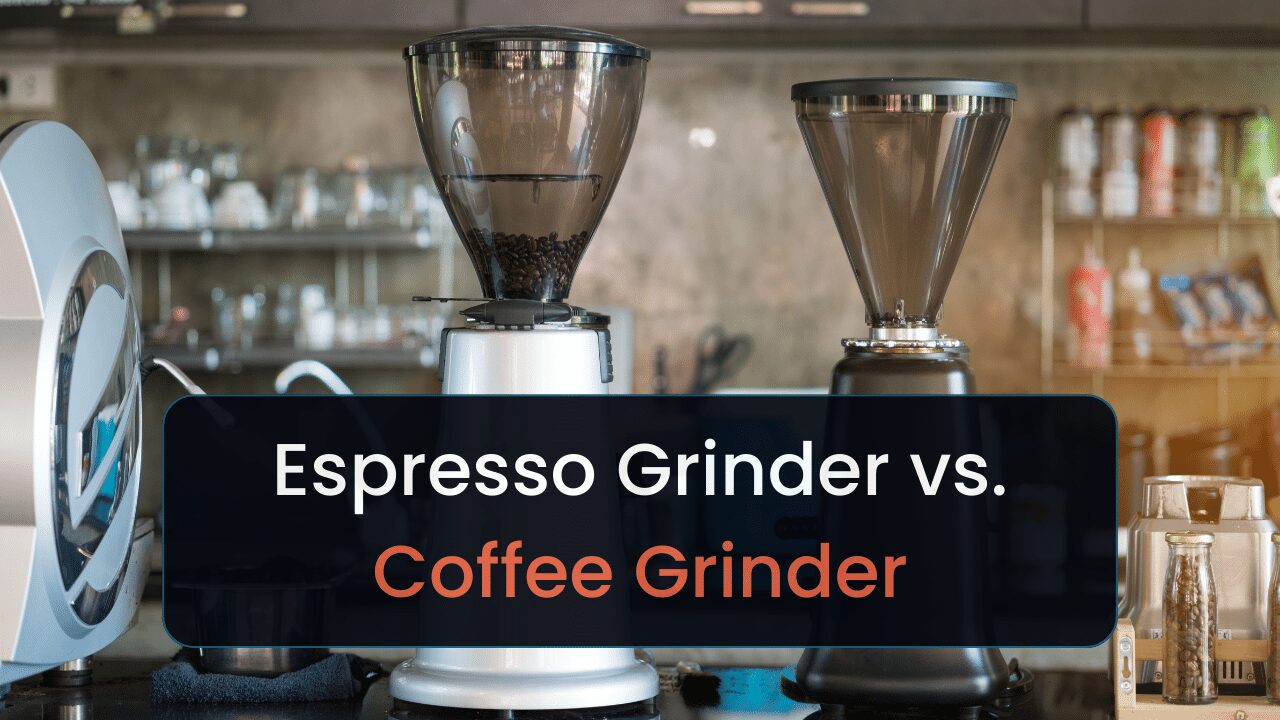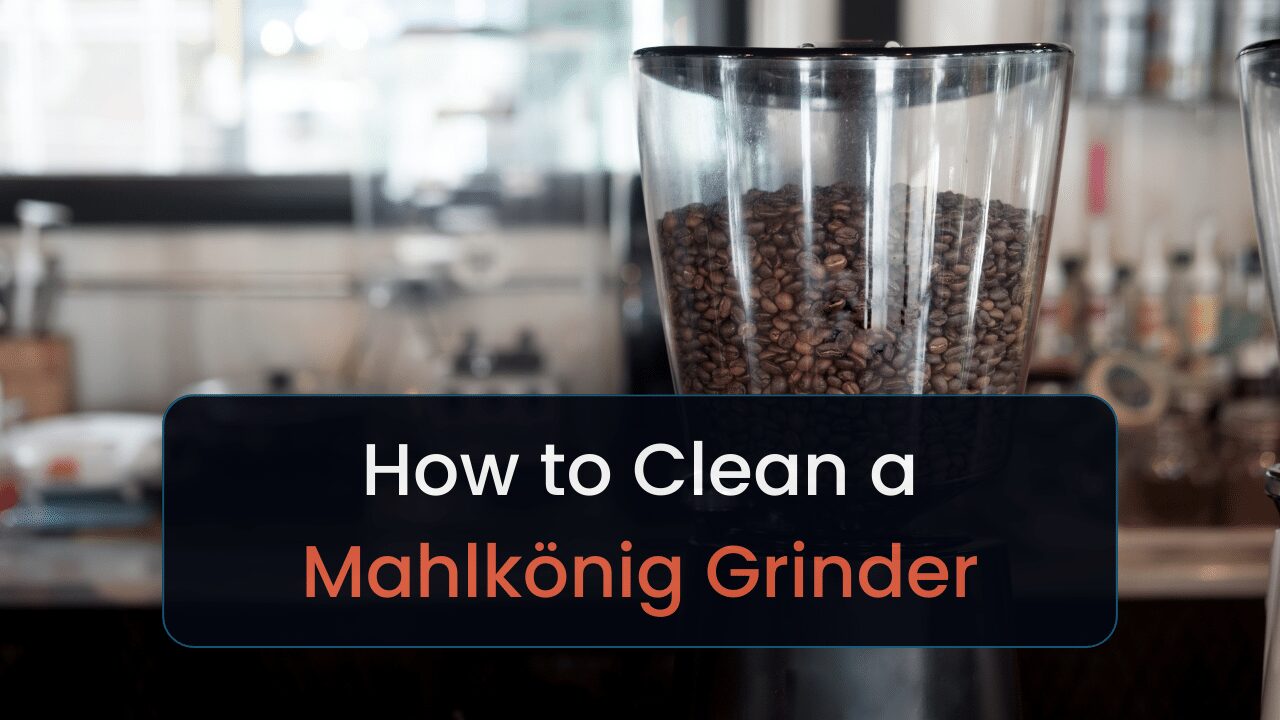I’ve always wondered what beans to use when making a cold brew and other coffee drinks. And today, I learned. I compared light and dark roasts to help you figure out which roast to use.
To understand each roast, I’ll cover these areas:
Let’s get roasting.
Key Takeaways
- Light roasts have a bit more caffeine
- Dark roasts have a bold taste, while light roasts have a fruity one
- Roasters roast light roasts for a shorter duration
- Dark roasts work better for lattes, while light roast does better in cold brew
Differences Between Dark & Light Roast
Here are the main differences between light and dark coffee roasts:
| Aspect | Light Roast | Dark Roast |
| Caffeine Levels | More caffeine | Less caffeine |
| Taste | Fruity, floral notes, bright acidity * | Bold, caramelized flavors, smoky aroma |
| Potential Benefits | Higher antioxidant content | May aid digestion |
| Drink Examples | Pour-over (Hario V60, Chemex), Cold Brew | Espresso-based drinks (Lattes, Cappuccinos), French Press |
Differences between light and dark roast coffee beans in terms of their caffeine levels, taste profiles, potential health benefits, and drink examples.
* Think of an acidic taste as a taste that’s sour. Or harsh on your taste buds.
I’ll emphasize more details on the differences between the roast types throughout the following sections.
1. Caffeine Levels
- Dark roasts contain a bit less caffeine
- The difference is small and often negligible
- Brewing methods and bean variety impact caffeine content more
Light roasts have a touch more caffeine than their darker counterparts. However, the difference doesn’t greatly impact your daily cup.
A study showed that coffee brewed with Indonesian Lampung Robusta light roast had 60 mg of caffeine. In contrast, a dark roast of the same beans had 51 mg [1]. However, as you likely know, many types of coffee beans exist.
Whether it’s the primary 4—Robusta, Arabica, Excelsa, and Liberica—or region-specific beans like what I mentioned. All these beans will have different caffeine profiles. Moreover, growing conditions may affect their caffeine content.
Thus, it’s difficult to determine whether there’s a vast caffeine difference between dark and light roasts.
2. Taste
- Light roasts highlight fruity, floral notes
- Dark roasts boast bolder, caramelized flavors
- Light roasts preserve acidity and origin flavors
- Dark roasts offer a smoky, roasty aroma
Light roasts often showcase fruity and floral notes, appealing to those who love a crisp cup. Dark roasts present bolder, caramelized flavors that please fans of a robust and full-bodied brew.
Light roasts let us savor the coffee’s original flavors and natural acidity. Dark roasts are your go-to if you prefer a smoky, roasty aroma.
3. Potential Health Benefits
- Light roasts have more antioxidants
- Dark roasts may aid digestion
- Both roasts contain beneficial compounds
- No single roast is universally healthier
Light roasts contain more polyphenol antioxidants. These compounds help our bodies fight against harmful free radicals. These species (the radicals) react to external factors like cigarette smoke and can attack macromolecules. Eventually leading to cell damage [2].
Dark roasts build a compound known as N-methylpyridinium (NMP) in your body. These spring to life when manufacturers roast coffee beans. It can allegedly reduce gastric cancer cells and doesn’t stimulate gastric acid as much as light roasts [3].
4. Drinks That It Works Best For
With light roasts, you’ll find pour-over methods like Chemex work well. These brewing styles highlight the coffee’s bright acidity and nuanced flavors. For cold brew fans, light roasts offer a less bitter taste that retains the bean’s flavors.
Dark roasts shine in espresso-based drinks, like lattes and cappuccinos. Where their robust taste complements the milk added to these drinks.
Immersion methods like French press or AeroPress also enhance dark roasts’ bold, intense flavors. Also, the oils captured during these brewing methods enhance your coffee’s mouth feel. Because you’ll have a thick and creamy drink.
What is a Light Roast?
A light roast is a type of coffee roast where beans heat for a shorter time. This preserves the bean’s natural flavors and keeps acidity levels high.
I’ll cover specific temperature ranges for both beans in a second.
The result is a bright, fruity, and nuanced cup of coffee that showcases the bean’s unique characteristics.
What is a Dark Roast?
A dark roast is a coffee roast where beans heat for a longer time. This process brings out the oils and reduces acidity, creating a bold, rich flavor.
The result is a smooth, full-bodied cup of coffee with a hint of natural bitterness.
How Does Coffee Roasting Work & Different Methods
Coffee roasting is the process of heating green coffee beans to transform their flavors and aroma.
Roasters place the beans in a roasting machine that heats them evenly. The process causes a Mallard reaction. A chemical reaction that creates medium and dark roast flavors [4]. It happens when sugars and amino acids in coffee beans mix and react under heat.
The longer the beans roast, the more sugars and amino acids mix, which reveals a bolder taste. Higher temperatures and longer roast times will speed up the reaction and produce more complex flavors.
How does the temperature and time affect each roast type’s flavor?
Let’s see:
| Coffee Roast | Temperature Range (°F) | Temperature Range (°C) | Average Time to Roast | Taste Description |
| Light | 350 °F to 400 °F | 175 °C to 205 °C | 7 to 10 minutes | Bright, fruity |
| Medium | 410 °F to 430 °F | 210 °C to 220 °C | 10 to 14 minutes | Balanced, smooth |
| Dark | 440 °F to 480 °F | 225 °C to 250 °C | 14 to 18 minutes | Bold, smoky |
Different coffee bean roast types compared.
Various Coffee Processing Methods Compared
In addition to roasting, you’ll want to know the different coffee processing methods and how they impact your bean’s taste:
| Processing Method | Description | Flavor Impact | Environmental Impact |
| Wet (Washed) | Depulped, fermented, & washed | Clean, bright acidity, & well-defined flavors | High water usage, wastewater issues |
| Dry (Natural) | Dried in their cherry | Sweet, fruity, & complex flavors with heavier body | Lower water usage, less waste |
| Semi-Washed (Wet-Hulled) | Depulped, washed, & hulled | Earthy, bold, & full-bodied flavors with lower acidity | Moderate water usage, less waste |
Different coffee processing methods’ descriptions, flavor impacts, and environmental implications.
FAQs
Read on, and you’ll find frequently asked questions about how light and dark roasts differ.
How Does the Roasting Process Affect Coffee Beans?
Roasting transforms coffee beans’ flavor, aroma, and acidity by inducing chemical reactions.
Lighter roasts preserve acidity and highlight origin flavors. Darker roasts bring out bolder, more caramelized flavors.
Is There a Difference in Caffeine Between Dark Roast & Light Roast Coffee?
There is a minor difference in caffeine content between dark and light roast coffee. Light roasts contain slightly more caffeine.
Are There Specific Brewing Methods That Work Better with Dark or Light Roast Coffee?
Yes, specific brewing methods can complement dark or light roast coffee better.
For dark roasts, immersion methods like French press enhance the bold, full-bodied flavor. Light roasts often shine with pour-over methods like Chemex, which highlight the nuanced flavors.
How Does the Roasting Process Affect the Oil Content & Appearance of Coffee Beans?
Roasting affects the oil content and appearance of coffee beans by driving oil to the surface as the temperature increases.
Darker roasts have a more oily appearance and a shiny surface. And lighter roasts have a matte finish with little to no visible oil on the beans.
Is One Roast Level Considered Better or Healthier Than the Other?
No single roast level is better or healthier.
How Can I Identify the Roast Level of Coffee Beans by Their Appearance or Smell?
Identify the roast level of coffee beans by observing their surface. Light roasts have a matte finish, while dark roasts appear oily.
And smelling them. Light roasts have fruity, floral notes, and dark roasts have smoky, caramelized aromas.
How Does the Roast Level Affect the Shelf Life of Coffee Beans?
Darker roasts lose freshness quicker due to their higher oil content and increased surface exposure. Lighter roasts have a longer shelf life.
Conclusion
Yes, dark roasts have less caffeine than light. But it’s a minuscule difference. The main differences between these beans are the acidity, flavor profile, and notes. From there, you’ll need to determine what drinks it’ll work well with.
To learn more about buying coffee beans, explore our more thorough guide.






